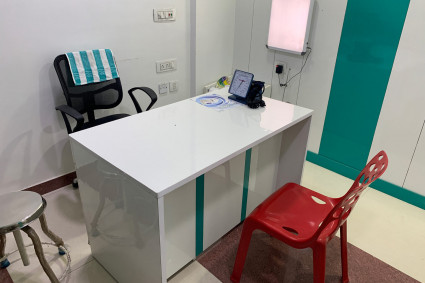
A stent becomes a necessity for an individual suffering from coronary artery disease (CAD); this condition refers to fatty deposit obstruction of blood flow and increases the chance of having a heart attack. While some subjects will manage the problem with lifestyle changes or medication, others will need angioplasty; such a procedure involves placing stents to prevent subsequent narrowing.
The Process of Stent Implantation in the Heart
To implant a stent, angioplasty is a minimally invasive procedure of doing it. A thin catheter is passed through the artery, most often from the wrist or groin site. The thin catheter advances to the blockage, where a balloon at the tip inflates to open up the artery, and the stent is held in place to keep the passage open.
Before the Procedure:
- Doctors conduct tests like an angiogram to assess artery blockages.
- Anticoagulants may sometimes be prescribed before the procedure.
- Patients should refrain from consuming any food or drink before the procedure.
During the Procedure:
- Local anesthesia is given to numb the site of insertion.
- The catheter is then guided through the artery to the site of blockage.
- The stenting procedure is finished, with the balloon being deflated and withdrawn.
After the Procedure:
Short stayed to monitor any complications.
Medications that prevent blood clots are given.
Offer the best tips to keep the heart healthy after stent implantation to guide their recovery.
This procedure greatly improves the blood flow into the body, although it does require a lot of commitment from the person to develop a heart-healthy lifestyle in the long term.
Adjusting to Life After a Stent
The recovery from stent placement is more than physical healing; it also requires some mental and emotional adjustments from heart-surgery patients. Many patients get anxious about their heart health and are not sure of their limitations. Also, after the stent implantation, people can be happy and realize that their lifestyle will change.
Post-Stent Guidelines for a Smooth Recovery:
• No strenuous activities for the next few weeks, as advised by your doctor.
• Watch for symptoms such as chest soreness, dizziness, or fatigue.
• Stress management with relaxation techniques, hobbies, or counseling.
• Attend all follow-up medical appointments to verify the adequacy of the stent.
Building confidence in daily activities and an understanding that this is a supportive tool, not a limiting one, is important. A well-structured routine gradually progresses with activity, allowing patients to return to normalcy in a controlled and healthy manner.
Heart-Healthy Lifestyle: Diet and Nutrition
A healthy diet plays an important role in a patient's life after stent implantation. This is because an implanted stent is not a curative method against coronary artery disease but a management tool; hence, the need to change the diet in daily routine helps to avoid further blockages in the arteries.
Best Diet Intake to keep your Heart Healthy:
• Fruits and Vegetables: They are rich in antioxidants and fiber that reduce inflammation.
• Whole Grains: Support heart health, brown rice, quinoa, and whole-wheat bread.
• Lean proteins: Promote cardiovascular function,n skinless poultry, fish, and legumes.
• Healthy fats: Avocados, nuts, as well as olive oil keep good levels of cholesterol.
Foods to Limit or Avoid:
• Process food that contains high amounts of trans fats as well as sodium.
• Sugary drinks and too much caffeine.
• Rarely beef and much full-fat dairy.
Since the heart-friendly diet makes life after a heart stent a positive change in one's life; it removes the complications that could arise and ensures longevity.
Exercise and Fitness: Staying Active Safely
Keep in mind, it takes time for one to get back into activity after an insertion of a stent; however, it should be treated with respect. A thorough exercise regimen will develop the heart while having fewer risks involved.
Guidelines for Exercise after Stenting
1️. Begin Slow: Walking is an excellent low-impact option initially.
2️. Increase Intensity Gradually: Slowly incorporate light jogging, swimming, and cycling.
3️. Avoid Running Over: If dizziness or chest discomfort occurs, stop immediately.
4️. Strength Training: Under medical supervision, light weights can be introduced.
5️. Consistency Over Intensity: Moderate activity every day is much more beneficial than occasional heavy workouts.
Physical activity is one of the most effective healthy heart tips after stent implantation. It improves circulation, lowers blood pressure, and boosts energy levels.
Medications and Ongoing Care
Medications play a very significant role in the life of a patient after heart stent placement. The exact combinations of medicines for stopping blood clots, decreasing cholesterol, and controlling blood pressure are prescribed by the physicians.
Few Most Commonly Prescribed Medications:
• The Blood Thinners: Aspirin and clopidogrel will keep the blood flowing through the stent.
• Cholesterol-Lowering Medicines: Statins minimize plaque accumulation in the arteries.
• Beta-Blockers: Help control heart rate and search for strain on the heart during pumping.
• Blood Pressure Medications: Ensures stable blood pressure levels. As a result, it was very important to have people follow the schedules for taking medications.
Failure to take the doses in time, skipping the medicines, or stopping taking the medicines without the doctor's advice will increase the risk of emergencies. Regular health checkups help to account for the heart's functionality and address the treatment plan accordingly.
Signs that Need Medical Attention:
• Chest pain or discomfort, especially during activity.
• Shortness of breath or unusual fatigue.
• Swelling in the legs or sudden weight gain.
• Dizziness, fainting, or irregular heartbeat.
Final Thoughts: Flourishing with a Healthy Heart
To live well, post-stent placement is a blend of medical therapy, lifestyle change, and self-forgetfulness. The procedure gives patients a second chance for heart health; it is now up to them to make choices that promote long-term well-being.
Adhering to healthy heart tips after stent implantation, including getting good nutrition, safe exercise, medication compliance, and stress management, will let them lead a full and active life. Regular checkups, staying informed, and making heart-conscious decisions each day will assure a continued good life.
The stent is now not only a device; it serves as a gentle reminder to keep heart health at a priority. So with positive thinking and the right habits, start moving forward, tightly embracing a lifestyle that encourages the additional potential of longevity and quality of life.





